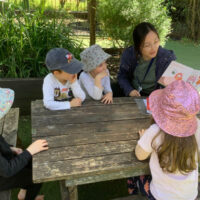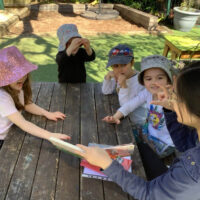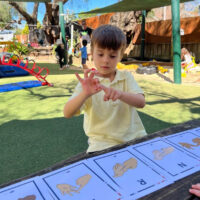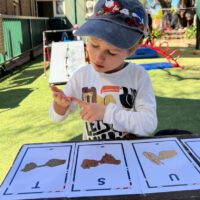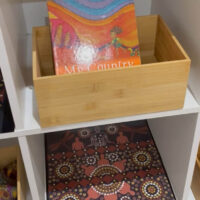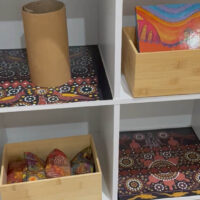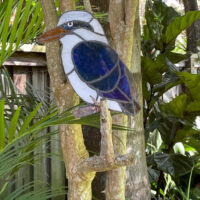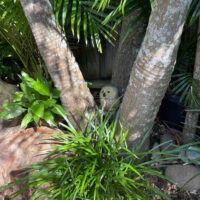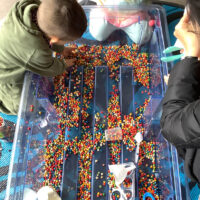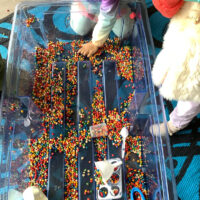Johnson House
Waratah Room
Story by Speech Pathologist Jennifer
Last week we celebrated Speech Pathology Week at The Infants’ Home. Inspired by this year’s theme, ‘Communicate Your Way’, we spent a morning in Johnson House Waratah room learning the Auslan alphabet. Australian Sign Language, commonly known as ‘Auslan’, is the language of the Deaf community in Australia.
At the beginning of our activity, we spoke about how there are many ways to talk and communicate, such as speaking, signing, using Key Word signs, visuals, and talkers/devices; and how all of these are just as important and meaningful as each other.
We read the book ‘Emma Memma’s Alphabet Day’ together. This story follows the character Emma Memma as she goes about her day. It contains visuals of how to fingerspell the Auslan alphabet. The children eagerly followed along with the story and copied the sign for each letter. As we signed certain letters, the children also identified other words that start with that letter.
The children then had turns fingerspelling the first letter in their own names with the support of a visual. Some of the children were keen to stay and fingerspell their whole name. They were given the letters in their names, and they placed these in the correct order. They were so excited to fingerspell their names and even enjoyed turning some of the visuals over to see if they could remember these on their own!
Family Day Care Sydney Wide
Story by Educator Support Officer Alix
Educator Leanne runs her Family Day Care Service in Avalon, exclusively for children under two years of age.
Her dedication and passion for working with this age group is evident in her long-standing regard within the community and with a constant service waitlist to match. On a recent visit to Leanne’s, our Family Day Care Manager, Catherine, shared how Leanne has been undergoing her own critical reflection on how she can authentically embed Indigenous perspectives into the learning environment in ways that are age-appropriate for children under two.
This saw Leanne using ethically purchased Aboriginal art printed paper and laminating it onto the children’s wooden storage shelves. She was intentional in keeping the shelves simple in their set up so that each natural resource was displayed in its own place. Catherine shared that this was done so that the children learn to respect their resources and understand that every item has a place that it is retuned to after play. Leanne also repurposed vintage Australian animal placemats as panel designs on the storage shelves, which worked beautifully alongside the art and resources.
Outside she had ‘hidden’ different Australian animal pieces throughout the garden. These pieces are often moved in between children’s visits, and they take great delight in spotting the different locations the animals end up in!
Community Playgroups
Story by Playgroup Coordinator Rebecca
At playgroup we aim to provide a range of activities that are easy for families to do at home. This includes ensuring that the items needed for an activity are easily accessible for families and that the activity itself is easy to prepare and setup.
The activity that you can see in the photos is a pouring and filling activity that helps children learn about measurement. As they develop, children will use measurement skills for everyday tasks such as cooking and organising, understanding time, working out distances and weighing things.
This activity also supports the development of fine motor skills and muscles. These are skills and muscles that children will use for many everyday tasks, such as feeding and dressing themselves independently.
The simple tasks of filling containers and pouring the contents out or into other containers gives children opportunities to learn about gravity, weight and cause and effect, and to develop muscle control.
This activity used dried chickpeas, which we have coloured by mixing with food colouring and leaving to dry for about 30min before putting into a container for storage. The coloured chickpeas can be stored and reused. We have provided jugs, spoons, funnels, tweezers, basically anything that can fill or be filled, for the children to explore and learn with.
Of course, it is always important to supervise children as they play and learn, and to ensure that items used for pouring and filling are not potential choke-hazards for younger children.
